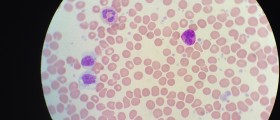
What is D-dimer blood test and when is it done?
Before trying to explain or understand what D-dimer bloodtest is, it might be helpful to understand first that D-dimer cannot bedetected unless the clot is formed first, and since it is actually a product for breaking down the clot, its presence in the blood is a proof that theprocess of breaking down the clot has started. D-dimer blood test is a laboratorytest, which is usually performed only in cases of emergency and when thepatients experience pain in the legs, swelling, problems with breathing, painin the chest, or some other signs and symptoms that might indicate pulmonaryembolism or deep vein thrombosis. Pulmonary embolism is a condition that ischaracterized by the presence of blood clot in the lungs, while deep veinthrombosis is characterized by the presence of the blood clots in the veins oflegs, usually. Besides these situations, D-dimer test can also be required bythe doctor at regular intervals in cases of patients who undergo the treatmentfor deep vein thrombosis, because the progress can be monitored this way.
The procedure itself is not complicated at all, since it is onlynecessary to draw a blood sample from the vein, and the results of this testshow the blood’s potential and tendency to clot improperly.
What do the results of D-dimer test indicate?
Since D-dimer blood test is done only if the doctor suspectsthat the patient might have pulmonary embolism, arterial plaque rupture, ordeep venous thrombosis, normal results rule out these possibilities. On theother side, the results that are lower than normal suggest that there isn’t muchclotting in the body, while positive results might be caused by a number ofreasons, including pregnancy, heart disease, recent surgery, or even an injuryor infection. Positive results are usually a reason for the doctor to require someadditional tests (such as ultrasound of the veins or CT scan) that can identifythe presence of thrombus, because they indicate the presence of clot formationand breakdown in increased levels. However, sometimes even normal resultsrequire additional tests.
There is also a possibility of false positive readings andfalse negative readings. Various diseases of the liver, inflammation, trauma,pregnancy, and even age can cause false positive readings, while false negativereadings might happen when the blood sample is not taken long enough after thethrombosis, or when the patient receives anticoagulant therapy, for example.
















Your thoughts on this
Loading...